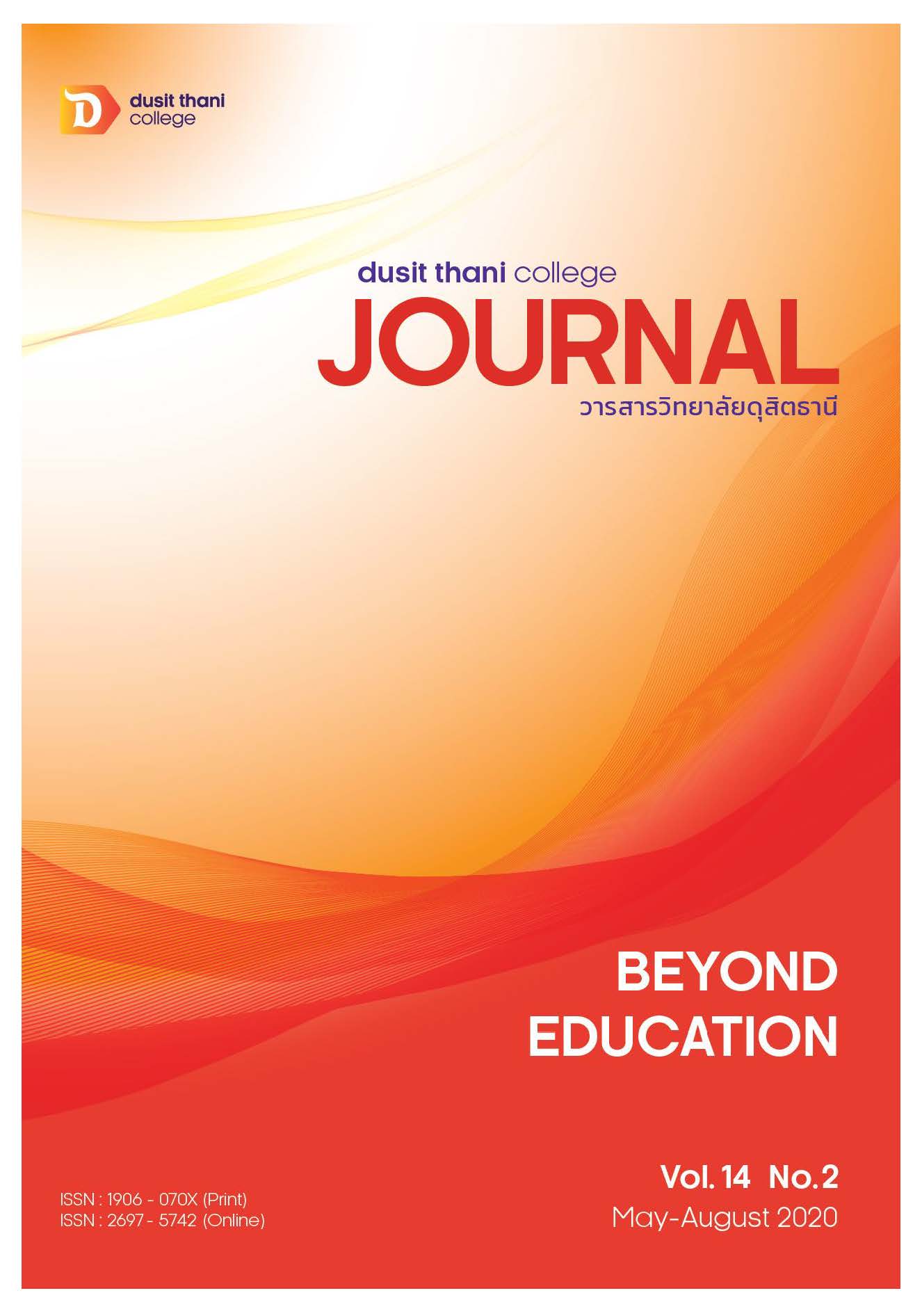The Path to Success in Building a Micro Entrepreneurship of Generation Y Vocational Graduates in Gig Economy as Guidelines for Curriculum Development of New Generation Learners
Main Article Content
Abstract
The research employed a mixed method research. The objectives were: 1) to study successful paths to entrepreneurship of vocational graduates; and 2) to analysis guidelines for curriculum development to support a new career of new generation learners. The sample group consisted of 408 vocational graduates whose educational institutions were under the Office of the Vocational Education Commission. The sample group was selected using the stratified random sampling method. The research instrument was a questionnaire. The quantitative data from the questionnaire was analyzed for percentage, mean and standard deviation. The researcher then conducted in-depth interview with 6 successful graduates in the business, using the semi-structured interview before conducting the content analysis. The researcher then presented the results and received feedback from stakeholders in a vocational commission forum to determine guidelines for developing the curriculum. The feedback from the public hearing was analyzed using content analysis.
The results showed that 63% of the graduates were a small entrepreneur as a supplementary job, 29.9% of them took it as a second - job and that approximately 7.1% of them took it as a full - time job. The successful paths consisted of the following aspects.The first aspect were, entrepreneurial characteristics. Secondly, Career selection process process was the second. The third aspect included an ability to self-develop and continuous learning. The fourth aspect included management and finance covering planning. The fifth aspect covered understanding changes of labor markets, and understanding of economy and society. As a result, the success of small entrepreneurs. resulted from profitable business operation would lead to business stability. In terms of the curriculum of the new generation of learners, the focus should be on entrepreneurial characteristics of the new generation of learners. The curriculum should include systems thinking, problem solving skills, teamwork skills, learning a global language, use of information for communication, creating innovation based on creativity and practice-oriented learning by providing qualification transfer between educational institutions and professional organizations. Moreover, there should be a promotion of education management guidance which corresponds to learners' actual conditions.
Article Details
Article Screening Policy
- All research and academic articles to be published must be considered and screened by three peer reviews in the relevant field / article.
- All articles, texts, illustrations and tables published in the journal are the personal opinions of the authors. Editors don't always have to agree. And no responsibility whatsoever is the sole responsibility of the author.
- The articles to be published must never be published. Where did you first publish? And not in the consideration of other journals If the audit found that there has been a duplicate publication It is the sole responsibility of the author.
- Any article that the reader sees as being plagiarized or impersonated without reference. Or mislead the work of the author Please let the journal editor know it will be your greatest blessing.
References
Northeast, Thailand. Sripathum Chonburi, 14(3): pp. 57-66. Academic Journal Sripatum. 9 (3): 57 - 66.
Champeeruang, S., and Wattanatorn, A. (2010). Knowledge Necessary for Knowledge-Based
Economy People. Journal of Education Naresuan University. 12 (1): 165 - 171.
Charoensri, B. (2007). Generation Y’s Responses towards Societal Marketing Programs.
Master of Management. Suranaree University of Technology.
Department of Employment. (2014). Future Career Prospects for the Next 3 Years
(2015-2017). Bangkok: Department of Employment.
Dokko, J. (2015). Worker and Online Gig Economy. New York: The Harmilton Project.
Maslow, A. H. (1970). Motivative and Personality. New York: Harper & Row.
Meengeon, T. (2016). Gig Economy a New Lifestyle.
Available Source: http://daily.khaosod.co.th, (March 10, 2018).
Naikhongsiri, S., Phromchan, S., and Korakotjintanakarn, P. (2012). The Development of
Dual Vocational Training Model by Integrated Learning Management in Enterprises.
Journal of Research, Rajamangala University of Technology Bangkok. 6(2): 1 - 10.
Office of the Vocational Education Commission. (2017). Vocational Development Plan
2017-2036. Bangkok: Office of the Vocational Education Commission.
Petchsuwan, N., and Pusara, R. (2015). The Development of Vocational Curriculum for Business Computer According to Employers Needby Using Backward Design.
EAU Heritage Journal and Social Science. 5(3): 152 - 169.
Phochinda, C., Ratana-o-larn, C., and Khitdee, K. (2017). Examination of the Validation of Life and Career Skills 21st Century Model for Grade 12 Students. Veridian E-Journal Silpakorn University. Silpakorn University 10(1): 458 - 470.
Pornthadawit, N. (1999). Perspective of Future Home Economics in Thailand
A Reflections of Vision and Paradigm from present to future.
Doctor of Philosophy Thesis in Vocational Education, Kasetsart University.
Puapongsakorn, N., Chalamwong, Y., and Latthapipat, D. (2012). The Link Between the
School and Quality Labor Market, Graduates and Quality Labor Shortages.
Bangkok: Thailand Development Research Institute.
Rattanatrai, S. (2013). Freelancer in Asean. Bangkok: Sangdao Publishing.
Siriwan, U. (2012). “Gen Y”. Chiang Mai Business Newspaper. Bangkok:
Thaiwattanapanich Co, Ltd.
Samkoset, V. (2015). Gig Economy. Available Source:
http://www.varakorn.com/page.php?id=303. (March 10, 2018).
Sutthinarakorn, W. (2014). Trend in Demand for Food Products of Manufacturers and
Consumers. Bangkok: The 52nd Kasetsart University Annual Conference, 6 February 2014.


